Strategic cruise missile North American SM-64 Navaho (USA)
Recall that in the summer of 1945, shortly after the end of the war in Europe, the American command ordered to examine the captured samples of German equipment and documentation on them in order to obtain important developments. Soon after, there was a proposal to develop a promising ground-to-ground cruise missile with high range characteristics. To the creation of such weapons several leading defense industry organizations were involved. Among others, Rocketdyne, a division of North American Aviation (NAA), submitted its application for participation in the program. After examining the available technologies and their prospects, NAA experts suggested a rough project schedule, according to which it was supposed to create a new rocket.
Early work
The draft of the new weapon was proposed to be developed in three stages. During the first, it was necessary to take as a basis the German V-2 ballistic missile in the A-4b version and equip it with aerodynamic planes, thus making a projectile aircraft. The second stage of the proposed project implied the removal of a liquid jet engine with the installation of a direct-flow air-jet engine (RAMJET). Finally, the third phase of the program was intended to create a new launch vehicle, which was to significantly increase the range of the combat missile created in the first two phases.
Having received the necessary documents and units, the Rocketdine specialists began research and design work. Of particular interest are their experiments with available engines of various types. Without the required test base, the designers checked them right in the parking lot next to their office. To protect other equipment from reactive gases, a gas separator was used, which was played by a conventional bulldozer. Despite the strange appearance, such tests allowed collecting a lot of necessary information.
In the spring of 1946, NAA was awarded a military department contract to continue developing a new cruise missile. The project received the official designation MX-770. In addition, until a certain time an alternative index was used - SSM-A-2. In accordance with the first contract, it was required to build a rocket capable of flying from 175 to 500 miles (280-800 km) and carry a nuclear warhead weighing about 2 thousand pounds (910 kg). At the end of July, an updated technical task was issued, which required an increase in the payload to 3 thousand pounds (1,4 t).
In the early stages of the MX-770 project, there were no special requirements for the range of the promising missile. Naturally, the range of the order of 500 miles was already quite a challenge considering the available technologies, but higher performance was not required up to a certain time.
The situation changed in the middle of the 1947 year. The military came to the conclusion that the required range was insufficient to solve existing combat missions. Because of this, major changes were made to the MX-770 project requirements. Now the rocket should be equipped only with a ramjet engine, and the range required to reach 1500 miles (about 2,4 thousand km). Due to some technological and design difficulties, the requirements were soon softened to a certain extent. In the early spring of the 48, the range of the missile was again changed, and the adjustments to the requirements were made taking into account the further development of the project. So, the early prototype rockets were supposed to fly at a distance of about 1000 miles, and from later ones three times longer range was required. Finally, the serial missiles for the army were to fly 5000 miles (more than 8000 km).
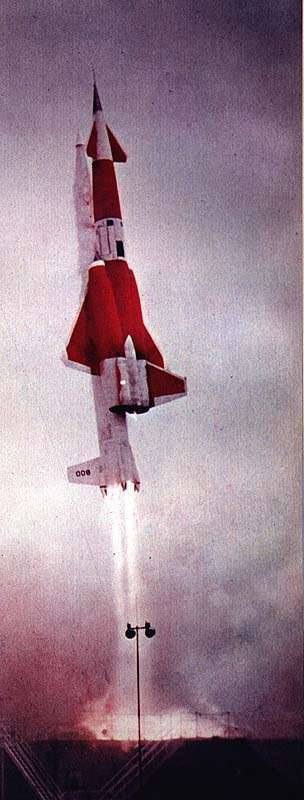
Takeoff of the XSM-64 rocket. Photo Spacelaunchreport.com
New requirements from July 47-th forced North American Aviation engineers to abandon their previous plans. Calculations showed that the implementation of technical specifications using ready-made German developments is not possible. The rocket and its units should be developed from scratch, using existing experience and technology. In addition, the experts finally decided to build a cruise missile with a full power plant and an additional booster, rather than a two-stage system with a booster unit and a glider equipped with a warhead and not having its own engine.
The appearance of updated requirements also allowed the specialists of the development company to formulate the main provisions of the project, according to which further work should be carried out. So, it was decided to create a new inertial navigation system for use as guidance equipment, and research in the wind tunnel made it possible to determine the optimal appearance of the airframe of the rocket. It was found that the most effective aerodynamic layout for the MX-770 will be a “weft” with a delta wing. The next stage of work on the new project implied the elaboration of the main issues and the creation of units in accordance with the updated requirements and plans.
Further calculations proved the effectiveness of a ramjet engine. Available and promising design of such a power plant promised a significant increase in performance. According to the calculations of that time, the rocket with the ramjet engine was a third longer range than a similar product with a liquid engine. At the same time, the required flight speed was ensured. The consequence of these calculations was the intensification of work on the creation of a new ramjet engine with enhanced characteristics. Already in the summer of 1947, the NAA's engine division received an order to modernize the existing XLR-41 Mark III experimental engine with increased thrust to 300 kN.

Flying Lab X-10. Photo Designation-systems.net
In parallel with the engine upgrade, North American specialists worked on the N-1 inertial navigation system project. At the preliminary stages of the project, calculations showed that controlling the movement of the rocket in three planes would ensure a sufficiently high accuracy of determining the coordinates. The estimated deviation from the real coordinates was 1 a mile per flight hour. Thus, when flying at a maximum range, the circular deviation of the missile should not exceed 2,5 thousand feet (of the order of 760 m). Nevertheless, the calculated characteristics of the N-1 system were considered insufficient from the point of view of the further development of rocket technology. With an increase in the range of the missile, the QUO could increase to unacceptable values. In connection with this, in the autumn of 47, the development of the N-2 system was launched, in which, besides the inertial navigation equipment, they included a device for orientation by the stars.
According to the results of the first studies of the updated project related to changes in customer requirements, the project development plan and tests of finished missiles were adjusted. Now, during the first stage, it was planned to test the MX-770 rocket in various configurations, including when launched from an aircraft carrier. The purpose of the second stage was to increase the flight range to 2-3 thousand miles (3200-4800 km). The third stage was intended to bring the range to 5 thousand miles. At the same time, it was necessary to increase the payload of the rocket to 10 thousand pounds (4,5 t).
The bulk of the MX-770 rocket design work was completed in 1951. However, the development of this weapon was associated with many difficulties. As a result, even after 51, the designers of Rocketdyne and the NAA had to constantly refine the project, correct the identified deficiencies, and use various auxiliary equipment for additional research.
Pilot auxiliary project
In order to facilitate the work and study the available proposals in 1950, the development of an additional project RTV-A-5 was agreed. The goal of this project was to create a radio-controlled aircraft with an aerodynamic appearance similar to a new type of combat missile. In 1951, the project received the updated name X-10. This designation remained until the very closure of the project in the mid-fifties.
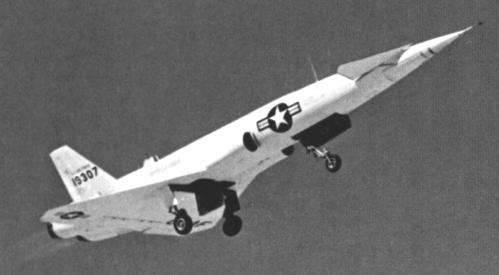
X-10 in flight. Photo Designation-systems.net
The product RTV-A-5 / X-10 was a radio-controlled aircraft with an elongated streamlined fuselage, elevators in the bow, a delta wing in the tail and two keels. On the rear of the fuselage sides were two engine nacelles with turbojet engines Westinghouse J40-WE-1, each with 48 kN. The device had a length of 20,17 m, a wing span of 8,6 m and a total height (with a tricycle landing gear) 4,5 m. The take-off weight was determined at the level of 19 t. The power plant made it possible to reach speeds of the order of M = 2,05, go up to 13,6 km altitude and fly to 13800 km.
The X-10 airframe was designed based on the MX-770 rocket design. With the help of tests of a radio-controlled aircraft, it was planned to test the prospects of the proposed glider when flying in different modes. In addition, at a certain stage of the program there were similarities in terms of onboard equipment. Initially, X-10 received only radio control equipment and autopilot. In the later stages of testing, an experienced aircraft was equipped with an inertial navigation system N-6, which was proposed for use on a full-fledged rocket.
The first flight of the product X-10 took place in October 1953. The aircraft successfully took off from one of the airfields and executed the flight program, after which it completed a successful landing. Test flights of the flying laboratory continued until 1956. In the course of this work, NAA experts checked various features of the existing design, and also collected data for further refinement of the MX-770 project.
Thirteen X-13s were built for testing use. Part of this technique was lost during the main tests. In addition, in the autumn and winter of 10-1958. North American conducted a series of additional tests in which three more were lost due to accidents. drone. Only one X-10 survived to the end of the program.
Product G-26
After checking the proposed aerodynamic appearance with the help of a radio-controlled aircraft, it became possible to build experienced rockets. In accordance with existing plans, the NAA company first began the construction of simplified prototypes of a promising cruise missile. These devices received the factory designation G-26. The military assigned the name XSM-64 to this vehicle. In addition, it was at this time that the program received the additional designation Navaho.
From a design point of view, the XSM-64 product was a slightly enlarged and modified version of the X-10 unmanned. At the same time, significant changes were made to individual structural elements, as well as the introduction of new units into the complex. In order to achieve the required range of flight experienced rocket was built on a two-stage scheme. For the rise in the air and the initial acceleration answered liquid first stage. A march was a payload missile cruise missile.
The starting stage was a unit with a conical head fairing and a cylindrical tail section, on which two keels were attached. The length of the first stage was 23,24 m, the maximum diameter was 1,78 m. In the ready-to-start form, the stage weighed 34 t. It was equipped with one North American XLR71-NA-1 liquid engine running 1070 kN, working on kerosene and liquefied oxygen.
The marching stage of the XSM-64 rocket retained the main features of the X-10 product, but it was equipped with engines of a different type, and also had a number of other features. At the same time, the landing gear was retained after the test flight was completed. With a launch weight of 27,2 T, the marching stage had a length of 20,65 m and a wing span of 8,71 m. Due to the lack of special success in its own projects, NAA was forced to use two direct-flow Wray XRJ47-W-5 engines of 36 kN on the new rocket. To control the missile used guidance equipment type N-6. In addition, for some tests, the rocket was equipped with a radio command control.
It was proposed to launch the XSM-64 rocket from a vertical launcher. The first stage with a liquid engine was supposed to lift the rocket into the air and deliver it to a height of at least 12 km, developing speed to M = 3. After that, it was planned to launch the ramjet propulsion march and destabilize the starting stage. Using their own engines, the cruise missile had to rise to an altitude of about 24 km and move to the target at a speed of M = 2,75. Flight range, according to calculations, could reach 3500 miles (5600 km).
The XSM-64 project had several major technical and technological features. Thus, parts made of titanium and some other newer alloys were widely used in the design of the sustainer and launch stages. In addition, all electronic rocket units were built exclusively on transistors. Thus, the Navajo rocket was one of the first to stories weapons without lamp equipment. The use of a fuel pair “kerosene + liquefied oxygen” can be considered a no less technical breakthrough.
In 1956, a launch facility for the XSM-64 / G-26 missiles was built at the Canadian Air Force Base on the USA Air Force base, which made it possible to begin testing advanced weapons. The first test launch of the rocket took place on November 6 of the same year and ended in failure. The rocket was in the air for 26 seconds, then it exploded. Soon the assembly of the second prototype, which also came to the test, was completed. Until mid-March, the NAA and the Air Force conducted ten test launches on 1957, which resulted in the destruction of experienced missiles within a few seconds after launch or directly on the launch complex.
The first relatively successful launch took place only on 22 March 57 th. This time the rocket stayed in the air for 4 minutes 39 seconds. In this case, the next flight, 25 of April, ended with an explosion literally over the launch pad. 26 of June of the same year, the Navaho rocket again managed to fly a fairly large distance: these tests were 4 mines last 29 mines from. Thus, all the missiles launched during the tests were destroyed at launch or in flight, because of which they could not return to the base after the flight was completed. Ironically, the retained chassis units turned out to be a useless load.
End of project
Tests of G-26 or XSM-64 missiles showed that the product developed by NAA does not meet customer requirements. Perhaps in the future, such cruise missiles could demonstrate the required performance of speed and range, but as of the summer of the 1957, they were not very reliable. As a result, the implementation of the remaining plans was in question. After a relatively successful (compared to a lot of others) launch of 26 in June of 1957, the customer, represented by the Pentagon, decided to revise his plans for the current project.
The MX-770 / XSM-64 long-range cruise missile development program has encountered serious difficulties. Despite all the efforts, the authors of the project failed to bring the reliability of the rocket to the required level and ensure an acceptable duration of the flight. Further refinement of the project took time, and also raised serious doubts. In addition, by the end of the fifties, notable success had been achieved in the field of ballistic missiles. Thus, the further development of the project "Navajo" was inappropriate.
In early July, the command of the air force ordered the curtailment of all work on an unsuccessful project. The concept of a long-range or intercontinental cruise missile “earth-to-earth” armed with a nuclear warhead was considered dubious. At the same time, work was continued on another project of similar weapons: the strategic cruise missile Northrop MX-775A Snark. Soon, it was even brought to service, and in 1961, these missiles were on alert for several months. However, the development of this weapon was associated with a lot of difficulties and costs, which is why it was removed from service soon after the start of full operation.
After the order, signed in July 1957, no one considered the XSM-64 product as a full-fledged military weapon. Nevertheless, it was decided to continue some work in order to gather information necessary for the implementation of future projects. 12 August NAA and the Air Force conducted the first launch of the series, which received the symbol Fly Five ("Flying Five"). Before 25 February, four more flights were performed on 58. Despite all the efforts of the developer, the rocket was not very reliable. However, in one of the XSM-64 flights, the Navaho was able to develop a speed of the order of M = 3 and remain in the air for 42 min 24 seconds.
In the autumn of 1958, the existing Navajo missiles were used as platforms for scientific equipment. In the framework of the RISE program (literally “recovery”, there was also a transcript of Research in Supersonic Environment - “Research in supersonic conditions”), two research flights were carried out, which, however, ended in failure. During the September 11 flight, the XSM-64 marching stage failed to start its engines, and then fell. 18 November, the second rocket rose to a height of 77 thousand feet (23,5 km), where it exploded. This was the last launch of the Navaho project missiles.
Project G-38
It should be recalled that the rocket G-26 or XSM-64 was the result of the second phase of the project MX-770. The third was to be a larger cruise missile, fully meeting the requirements of the customer. The development of this project started before the start of the G-26 test. The new version of the rocket received the official designation XSM-64A and factory G-38. It was planned that the successful completion of the XSM-64 trials would open the way to a newer development, but the constant failure and lack of progress led to the closure of the entire project. By the time such a decision was made, the development of the XSM-64A project was completed, but it remained on paper.
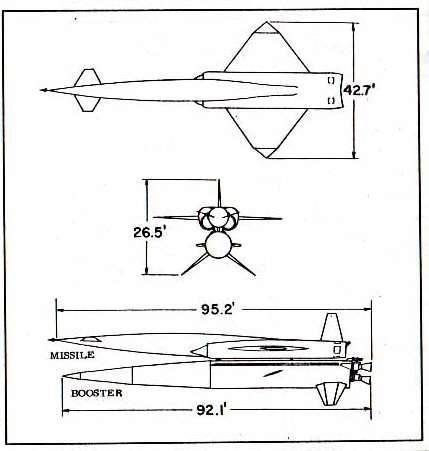
G-38 / XSM-64A rocket scheme. Figure Spacelaunchreport.com
The G-38 / XSM-64A project in the final version, presented in February 1957, was a modified version of the previous G-26. This rocket differed in the increased sizes and other structure of the onboard equipment. At the same time, the launch principles and other features of the project remained almost unchanged. The new rocket was supposed to have a two-stage design with an acceleration unit and a sustainer stage in the form of a cruise missile.
In the new project it was proposed to use a larger and heavier first stage with high-powered engines. The new launch stage had a length of 28,1 m and a diameter of 2,4 m, and its weight reached 81,5 t. It had to be equipped with a North American XLR83-NA-1 liquid engine with a 1800 kN thrust. The tasks of the launch stage remained the same: the rise of the entire rocket to a height of several kilometers and the initial acceleration of the sustainer stage, necessary for the launch of its direct-flow engines.
The march stage was still built according to the “duck” scheme, but now it had a diamond-shaped wing. Rocket length increased to 26,7 m, wing span - to 13 m. Estimated starting weight of the march stage reached 54,6 t. Two propulsion ramjet Wright XRJ47-W-7 each with a weight of 50 kN was proposed as a power plant. Such a power plant should have been used to reach an altitude of about 24 km and flight at a speed of M = 3,25. The estimated flight range was at the level of 6300 miles (10 thousand km.).
The XSM-64A Navaho rocket was proposed to be equipped with the N-6A inertial navigation system with additional astronomical equipment, which increases the accuracy of the course calculation. As a payload, the rocket was supposed to carry a 39 megaphone thermonuclear warhead W4 with a TNT equivalent. Prototypes of the G-38 marching stage were planned to be equipped with a bicycle-type landing gear to return to the airfield after a successful test flight.
Results
After several unsuccessful and relatively successful (especially against the background of other) test launches of the XSM-64 / G-26 rocket, the customer, represented by the air force, decided to abandon the further development of the Navaho project. The resulting cruise missile had extremely low reliability, which could not be considered as a promising strategic weapon. Launching the construction was considered too complicated, costly, lengthy and unprofitable. The result was the rejection of the further development of the rocket as a promising means of delivering nuclear weapons. However, in the future, seven missiles were used in new research projects.
One reason for the closure of the SM-64 project was its excessive cost. According to available data, by the time such a decision was made, the project cost the taxpayers approximately 300 million dollars (in the prices of the fifties). At the same time, such investments did not lead to real results: the longest flight of the G-26 rocket lasted a little more than 40 minutes, which was clearly not enough for full-fledged use with a rocket flight at full range. In order to avoid further expenses with questionable efficiency, the project was closed.
Despite the closure of the project, the development of a promising strategic cruise missile gave some results. The Navajo project, as well as other similar developments, was the reason for conducting a mass of research works in the field of materials science, electronics, engine-building, etc. In the course of these studies, American scientists have created a mass of new technologies, components and assemblies. In the future, new developments created in the framework of the unsuccessful cruise missile project were most actively used in the development of new systems for various purposes.
The most striking example of the use of the designs of the MX-770 / SM-64 project is the AGM-28 Hound Dog cruise missile project, created by North American in 1959. The use of ready-made developments has affected the mass of the features of this product, primarily on the design and characteristic appearance. These missiles were used by US strategic bombers over the next few decades.
Several models of equipment created within the framework of the MX-770 project have survived to our time. The only surviving specimen of the X-10 flying lab is now stored in a museum at the Wright-Patterson Air Force base. It is also known that the launch stage of the XSM-64 rocket is present in the museum exposition of the organization Veterans of Foreign Wars (Fort McCoy, Florida). The most well-known of the surviving samples is the fully assembled G-26 rocket, stored in the open area of the air base at Cape Canaveral. This product in red and white coloring consists of a starting and marching stage and clearly demonstrates the design of the rocket assembly.
Like many other developments of its time, the SM-64 Navaho cruise missile proved too complex and unreliable for practical use, and also was distinguished by unacceptably high cost. However, all the costs of its creation were not wasted. This project allowed to master new technologies, and also showed the inconsistency of the original concept of an intercontinental cruise missile, which until a certain time was considered promising and promising. The failure of the Navajo project and other similar developments to a certain extent spurred the development of ballistic missiles, which still remain the main means of delivery of nuclear warheads.
On the materials of the sites:
http://fas.org/
http://spacelaunchreport.com/
http://designation-systems.net/
http://boeing.com/
http://astronautix.com/
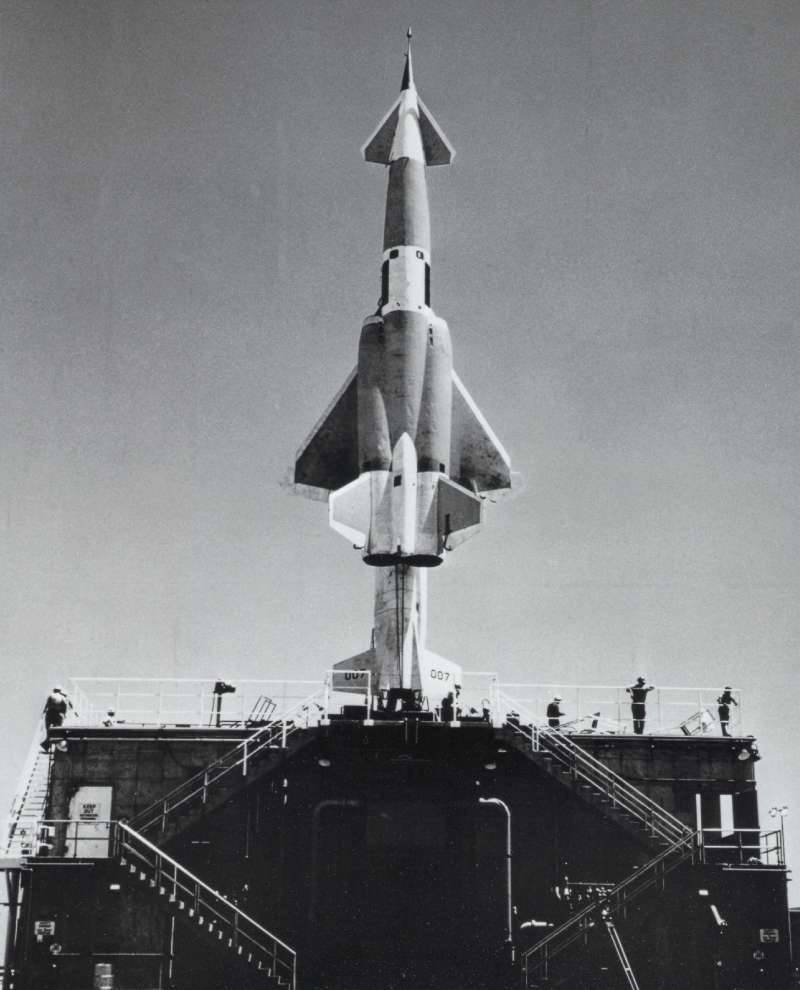
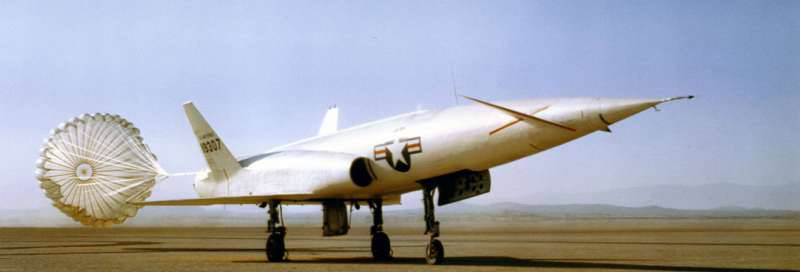
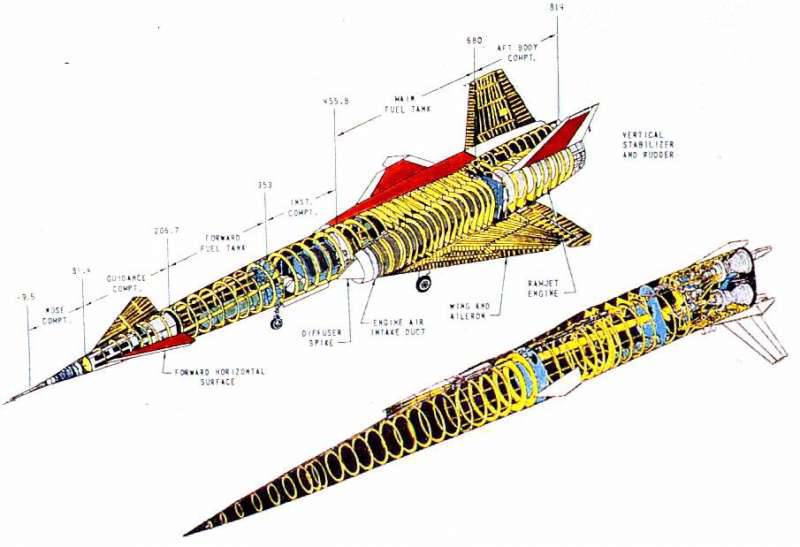
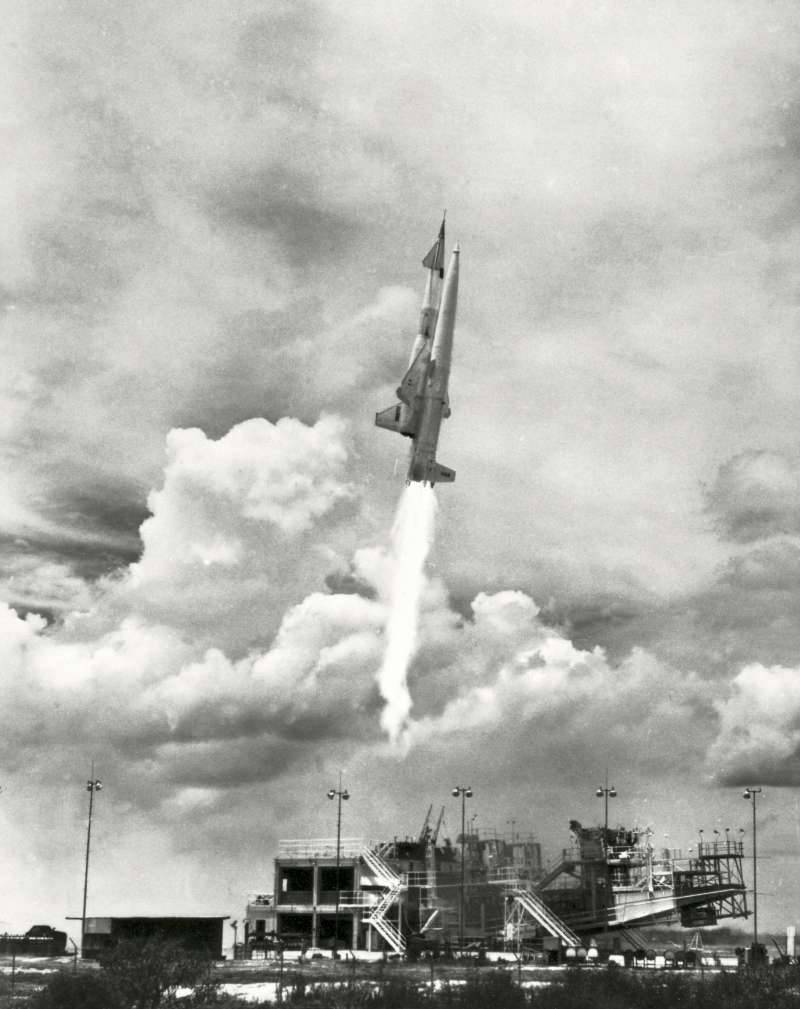
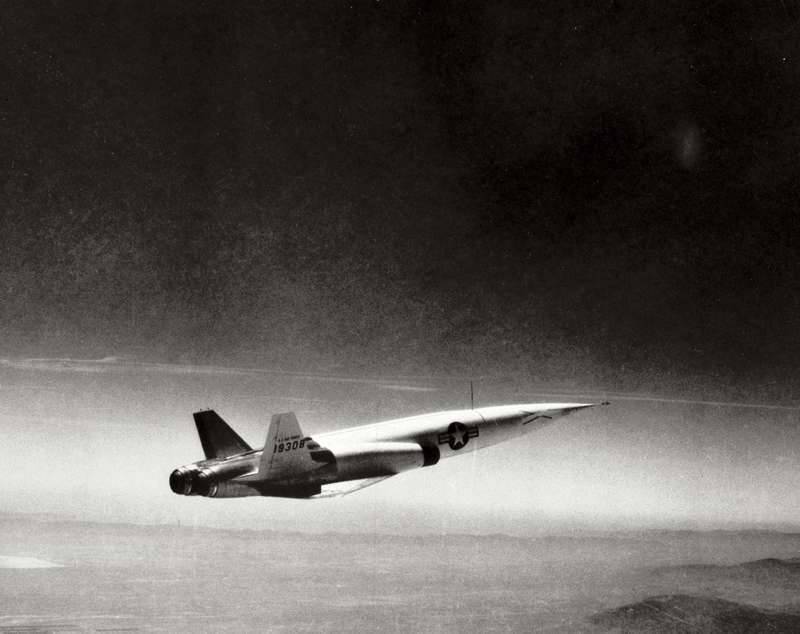
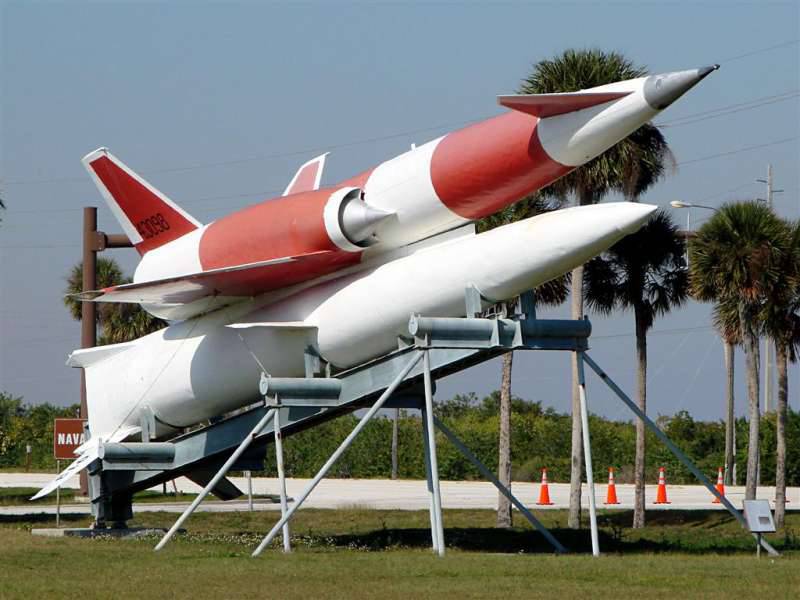
Information